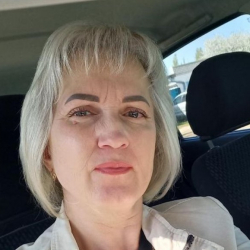Mikhailovka by schoolchildren’s eyes.
A group of British tourists has found the boy with a map and an old suitcase on the bank of the river Medveditsa.
Mary: He’s woken up!
Ellen: Do you understand English, my dear friend?
The boy: I understand and speak.
Ellen: What’s your name?
The boy: I don’t remember.
Mary: Where are you from?
The boy: I’ve got to the shipwreck and I only have the map of my town and some my personal things.
Mary: Oh! This map has been wet, we can hardly see the contents.
Ellen: Let’s help him to return home. Look! There are some objects on this map.
The boy: We have to stick the route of our expedition. We have no time to worry!
Ellen: How exciting to foot on an unknown mystery land!
Mary: Have been here, we are going to study only a district of 1 km on the 50th parallel.
The boy: The forms of the Town Garden have become unrecognizable. The town was empty and dumpy. The merchant paid o lot of attention to extension of town streets and public gardens. The Town Garden with Merchant’s Club was built in 1897. There were a lot of flowers, fountains, benches in the Garden. At the beginning of the 20th century people could see theatre performances, films and circus shows too. In the evening men could play billiard in the Club.
Ellen: Nowadays, it’s the District House of Culture, where children can learn dancing and singing.
Mary: Maybe we aren’t properly studying the document. We’re looking for but we haven’t got any results!
The boy: Stop! I'm a little hungry! Let's have a snack. I have the most delicious buns of our town from the Dryabin’s bakery which is on Parijskiy Lane. In 1859 in Sloboda Mikhailovka there were 268 houses and 1870 people. There was the only vine factory by Sebryakov M.V. There were 31 bakeries. Hardworking people baked buns, bread, sushki. The merchants Dryabin, Larionov baked tasty bread. They sold their bread on the market and in other cities: Tambov, Rostov-on-Don.
Мary: Oh no! Now it’s the Children’s School of Art where children learn music and art.
Ellen: We are on a wrong way.
The boy: I know! It is the Charity opposite us. They always helped everyone who needed. The social life of the merchants was in the centre of old town. There was the administration on Parijskiy Lane. Churumov was the manager of the town. Sebryakov’s Post Office was near the administration. Most assets were directed on buying books for schools, clothes for shelters, free canteens, building the church. During 1942-1943 Nazi aircraft pounded the town to destruction, have dropped on it thousands of bombs. Not only the ground burned, the houses, the post office, the Charity burned too. And on the 9th of May 1958 the new building was opened. Ellen: Nowadays it’s the District Administration. I'm afraid they cannot help you now.
The boy: Finally I’ve remembered! Look! There is my house right there! I'm Anatoliy Aksyonov. I'm the son of a rich merchant Aksyonov. Come with me. We have a large library and my mum will make you tea.
Мary: I'm sorry but now your house is the most important building in the town. It is the Museum of Local History, which stores the history of your town.
The boy: My father built this house for our big family. The house was painted with yellow color – the color of the sun, joy… In 1918 the house was confiscated by the Revolution Committee. Budyonny S.M., Mironov F.K. visited it. Later the house was a hospital, too. How can I come back home now? (crying)
Ellen: Stop! Stop! Don’t be sad. We’ll find out how to return you back.
Mary: Everything will be good!
Ellen: Anatoliy, were there any schools in your town? Mary and me, we are studying in Oxford.
The boy: Oh, yes of course. The Male Gymnasium №1 was next to my house. At the beginning of the XX century the 1st Male Gymnasium was opened by the merchants. After the revolution it was the school of the 1st and 2nd levels. During the GPW the 1st school changed into the hospital. In 1943-1944 there were a lot of hungry homeless children. The government decided to send them to Mikhailovka. There were many unique buildings in the town. One of the best was given to homeless children in 1945.
Ellen: Nowadays the Children’s House has been disappearing. Oh no! What has happened in this town?
Мary: Has the school also disappeared?
Ellen: No. Look to the right. The school is there.
The boy: That time it was considered the religious and moral education of girls depended on the moral of the family. Comprehensive school for girls was a private gymnasium in old building of school №1. In 1956 the new building of school №1 was opened. This school is famous for its students, teachers, graduates and its big history. It will be its 100th anniversary in 2018.
Мary: Well. It was memorable trip. We’ve learned so much new and interesting information here.
Ellen: This is your Motherland! Live, study and always glorify it! Good bye!






































